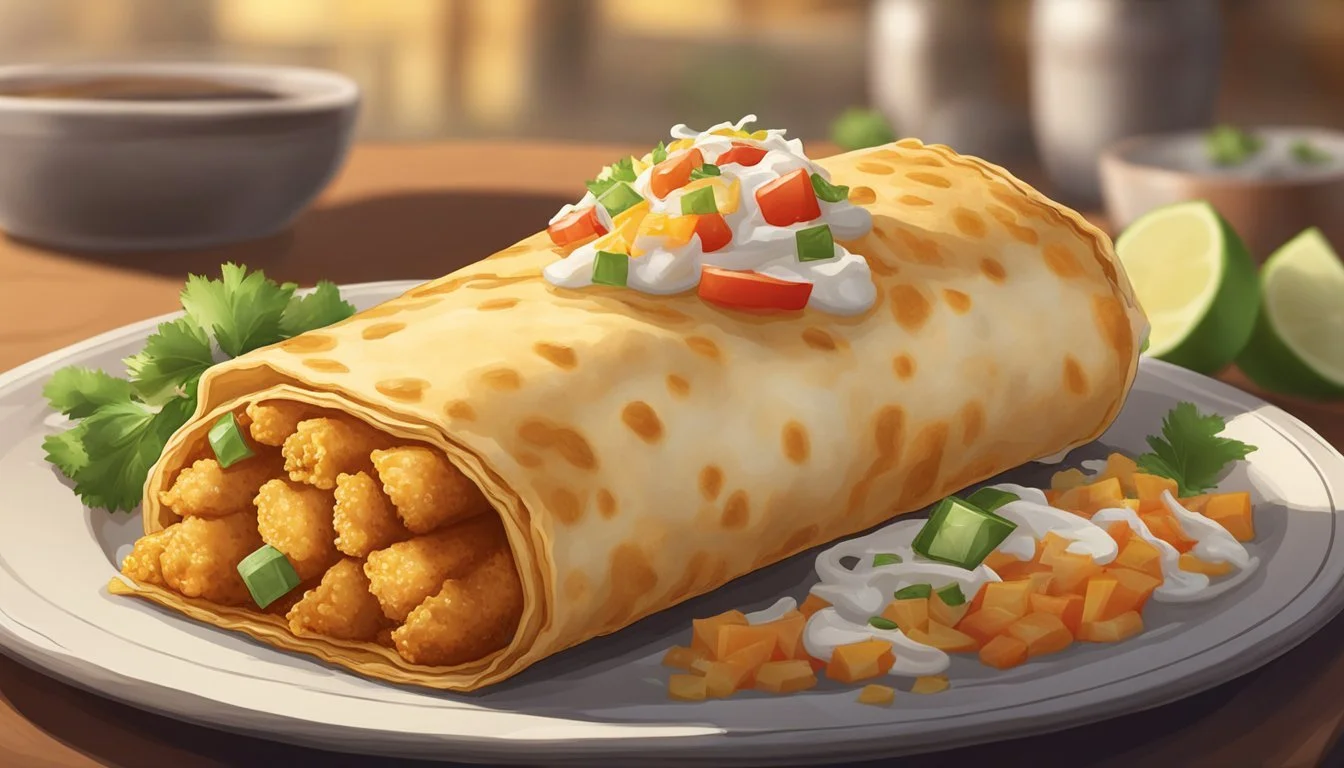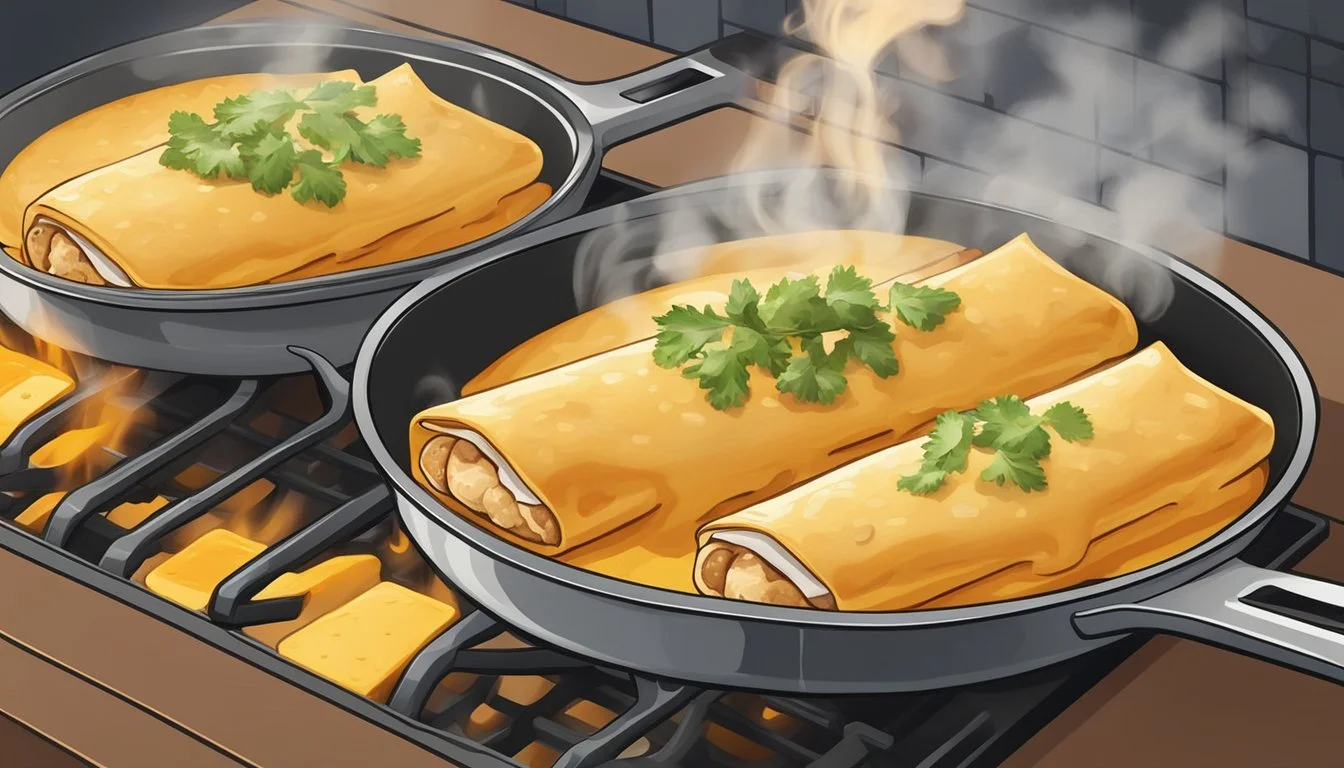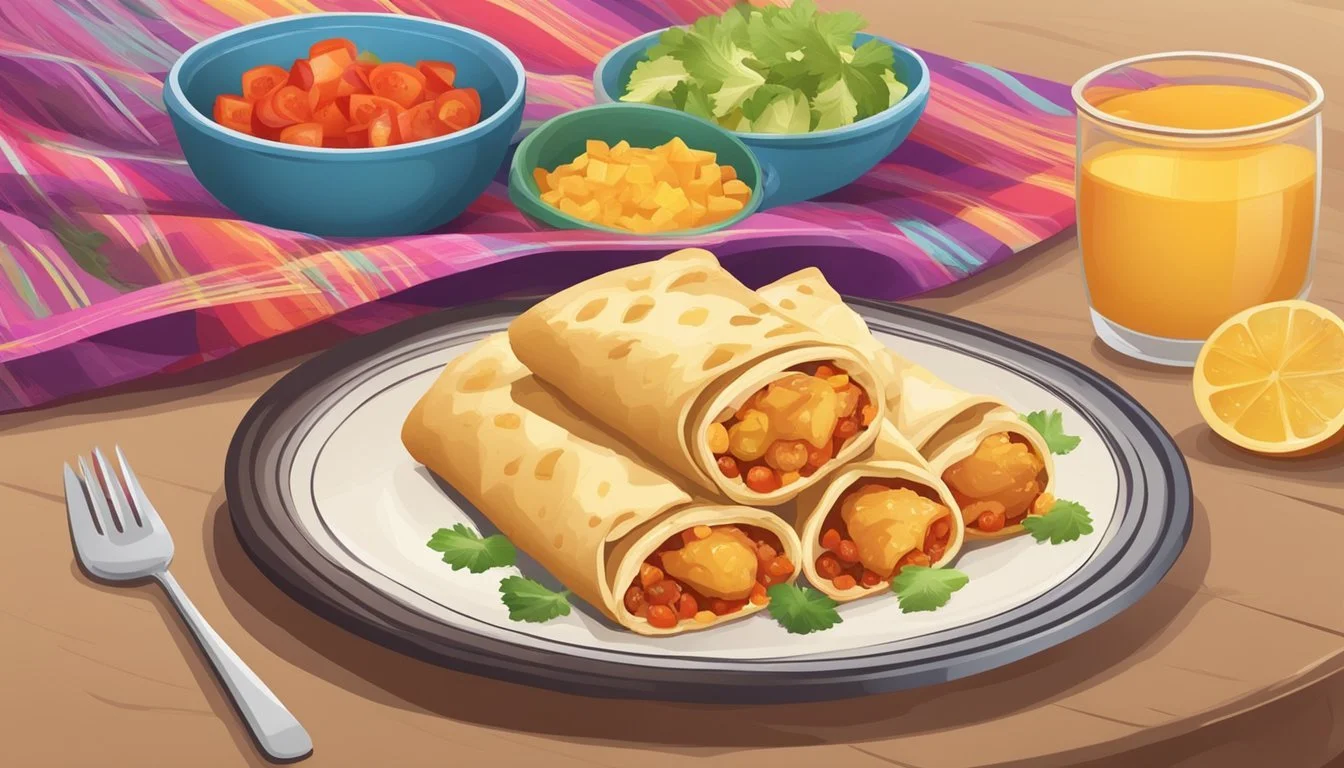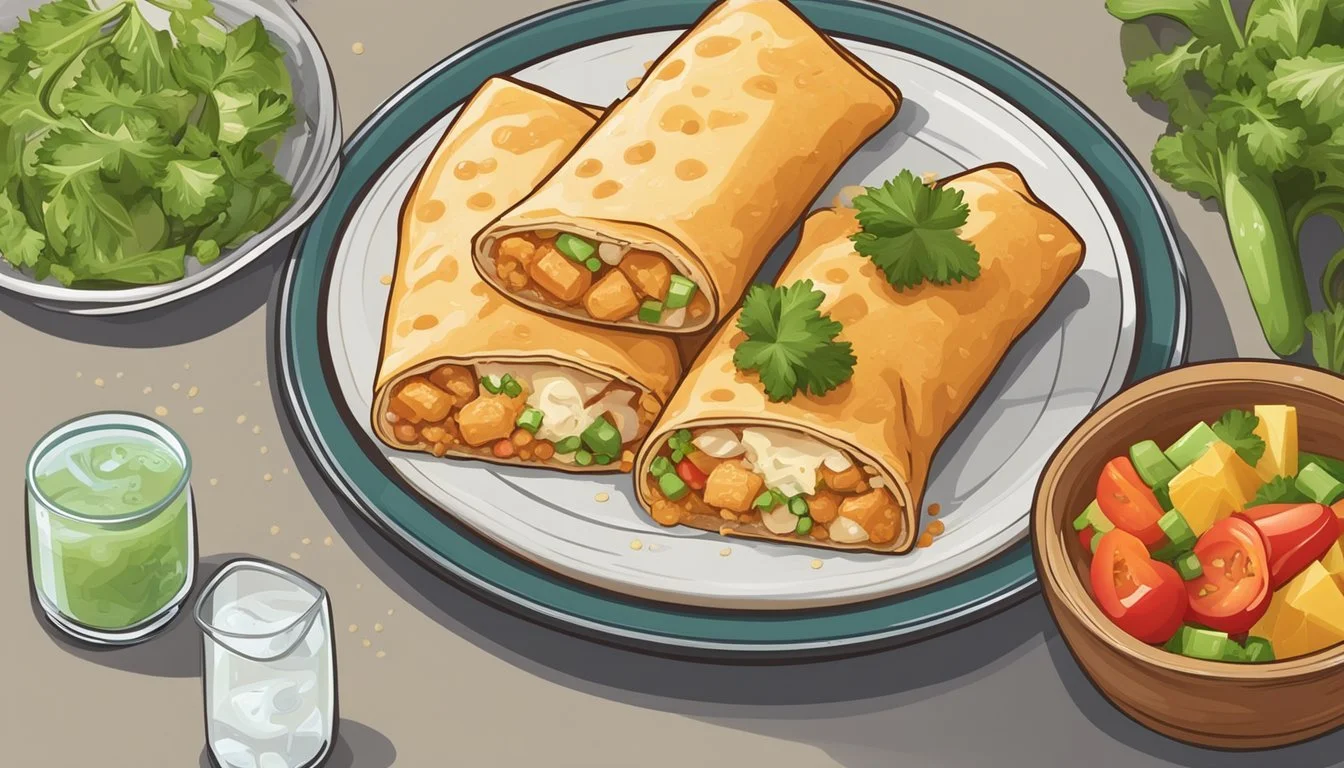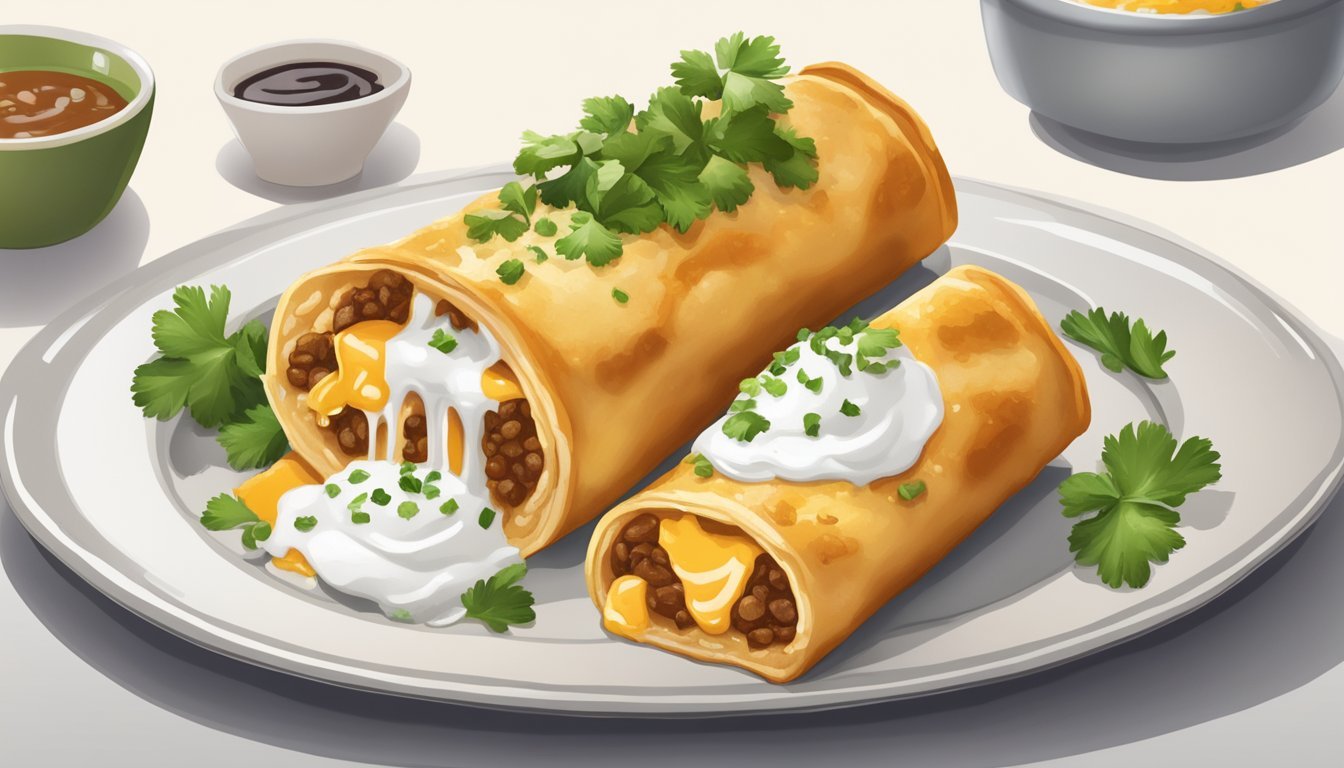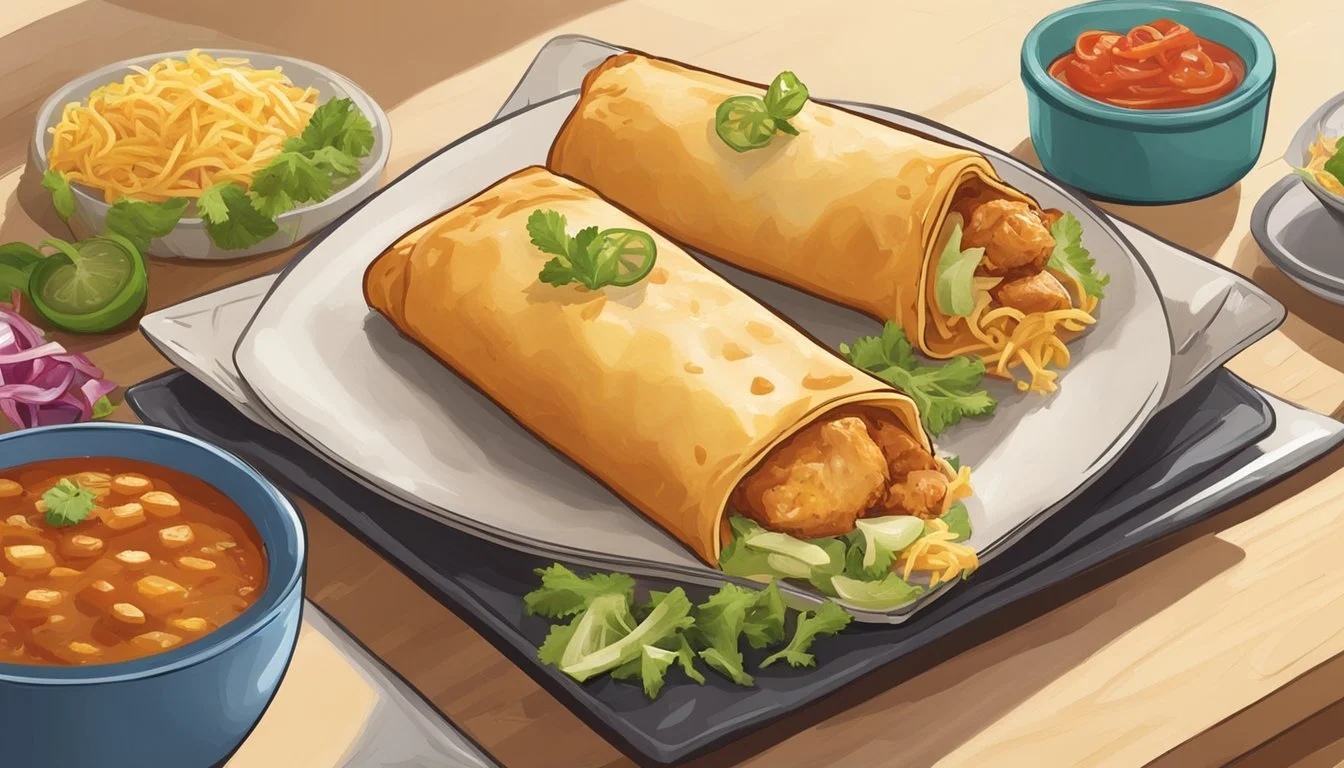How Long Do Chicken and Cheese Chimichangas Last?
Storage Tips and Guidelines
Chicken and cheese chimichangas, whether fried or baked, are a delightful dish that balances flavor and texture beautifully. Many people wonder about the shelf life of these savory treats, especially if they want to prepare them in advance or store leftovers. Chicken and cheese chimichangas can last for up to 3-4 days in the refrigerator when stored in an airtight container.
For those who wish to extend their storage time, freezing is a viable option. When properly wrapped in aluminum foil and placed in a freezer-safe bag, chimichangas can be kept in the freezer for up to three months. To enjoy them later, simply reheat them in the oven to retain their crispy exterior.
When considering food safety, it's crucial to ensure that the chimichangas are not left at room temperature for more than two hours. This prevents the risk of bacterial growth and ensures the dish remains safe to eat. Proper storage practices will help you savor these delicious chicken and cheese chimichangas whenever you desire.
Understanding Chimichangas
Chimichangas, a popular Tex-Mex dish, offer a delightful blend of flavors, combining the texture of a burrito with the crispiness of being deep-fried. To better appreciate chimichangas, it's essential to explore their origins and understand the differences between a chimichanga and a burrito.
Origins and Definition
Chimichangas trace their roots back to the Southwestern United States, particularly in Arizona. They are believed to have originated as a result of either a happy accident or culinary experimentation. There are stories of a burrito mistakenly dropped into a deep fryer, resulting in the crispy delight known today.
A chimichanga is essentially a burrito filled with ingredients such as chicken, cheese, beans, and authentic Mexican rice, and then deep-fried until golden and crispy. The added crunch from frying differentiates it significantly from other types of burritos. Chimichangas are frequently topped with salsa, guacamole, sour cream, or cheese sauce, enhancing their rich flavors.
Chimichanga Vs. Burrito
While both chimichangas and burritos start with a tortilla wrap, the end result sets them apart. A burrito is a soft tortilla filled with various ingredients like meat, beans, cheese, and rice—all wrapped tightly and typically served as is.
In contrast, a chimichanga takes this concept further by deep-frying the wrapped tortilla. This process gives the chimichanga its characteristic crispy texture.
The flavor profiles also differ due to the frying process, which adds a distinct crunch and a slightly smoky taste. While burritos are common across various Mexican and Tex-Mex cuisines, chimichangas are a celebrated specialty in Tex-Mex fare, particularly popular in Arizona.
By understanding these differences, one can better appreciate the unique qualities and origin stories that define chimichangas.
Ingredients and Preparation
When preparing chicken and cheese chimichangas, selecting the right ingredients and following precise steps are crucial for achieving the best flavor and texture. Key elements include various fillings, appropriate tortillas, and cheeses that enhance the dish.
Common Fillings
Fillings for chicken and cheese chimichangas often feature shredded chicken combined with beans, either black beans or refried beans. Seasonings such as cumin, chili powder, salt, and garlic are commonly used to enhance the flavor of the chicken mixture.
Vegetables like onions and green chilis add an extra layer of taste and texture. For those who prefer a heartier option, incorporating rice or even additional proteins like shredded beef or pork can provide complexity to the dish.
Recommended Tortillas
Flour tortillas are the preferred choice for chimichangas due to their pliability and ability to crisp up nicely whether fried or baked. It is essential to use large tortillas to hold ample filling without breaking.
Heating the tortillas briefly in a microwave or on a skillet can make them more flexible, which helps prevent tearing during assembly. Using a paper towel to cover the tortillas while heating can help retain moisture.
Cheese Varieties in Chimichangas
Cheese plays a pivotal role in chicken chimichangas, with shredded cheese varieties like cheddar being particularly popular. Cheddar provides a sharp, tangy flavor that complements the savory chicken filling.
Other cheeses, such as Monterey Jack or a Mexican blend, can be used for a slightly different taste profile. An additional layer of richness can be added using a cheese sauce, incorporating cheeses like queso blanco for a creamy texture.
Cooking Techniques
The method used to cook chimichangas significantly affects their texture and flavor. Different techniques yield varying degrees of crispiness and richness.
Baking Chimichangas
Baking chimichangas is a healthier option compared to frying. To bake, preheat the oven to 400°F (204°C). Place the assembled chimichangas on a baking sheet lined with parchment paper. Lightly brush each chimichanga with olive oil or cooking spray to help achieve a crispy texture.
Bake for 20-25 minutes, or until they turn golden brown. This method reduces the amount of fat while still providing a delightful crunch. Additionally, baking allows you to cook multiple chimichangas at once, making it ideal for serving a crowd.
Deep-Frying Vs. Air Frying
Deep-frying chimichangas involves submerging them in hot vegetable oil or canola oil until they are golden brown. Heat the oil in a deep pan or fryer to 350°F (175°C). Fry each chimichanga for 2-3 minutes per side. This results in a rich and crispy exterior.
On the other hand, air frying uses hot air circulation to achieve similar results with less oil. Preheat the air fryer to 375°F (190°C). Lightly brush the chimichangas with oil and cook for 8-10 minutes, flipping halfway. This method significantly cuts down on calories and fat.
Achieving the Perfect Crispiness
For perfectly crispy chimichangas, whether baking, frying, or air frying, paying attention to oil and heat is crucial. Preheating the oven or air fryer ensures even cooking. Lightly brushing with oil or cooking spray aids in developing a golden, crispy texture.
When deep-frying, maintaining oil at a consistent temperature prevents the chimichangas from becoming greasy. For air frying, placing the chimichangas in a single layer allows for even air circulation.
Achieving the right amount of browning without burning depends on carefully monitoring cooking times and flipping the chimichangas midway.
Proper Storage and Shelf Life
Proper handling and storage significantly impact the shelf life of chicken and cheese chimichangas, ensuring they remain safe and tasty to consume. Key guidelines include appropriate refrigeration, freezing, and thawing methods.
Refrigeration Guidelines
When storing cooked chicken and cheese chimichangas, they should be placed in airtight containers or tightly wrapped in aluminum foil or plastic wrap.
Refrigerate at 40°F (4°C) or below to slow bacterial growth. Properly stored, the chimichangas will last for about 3-4 days.
It's essential to promptly refrigerate the chimichangas within two hours of cooking to prevent bacterial growth. If the temperature outside is above 90°F, this window shortens to one hour.
Freezing and Thawing Tips
For extended storage, freezing chicken and cheese chimichangas is highly effective. Place the cooled chimichangas in heavy-duty freezer bags or airtight containers.
They can be frozen for 2-3 months without significant loss in quality.
To thaw, transfer the chimichangas to the refrigerator and allow them to thaw overnight. Avoid leaving them at room temperature to prevent bacterial growth. Reheat the thawed chimichangas in an oven at 350°F for about 15-20 minutes, or until heated through, ensuring the internal temperature reaches 165°F.
Serving Suggestions
Chicken and cheese chimichangas pair wonderfully with a variety of toppings, sauces, and sides. These additions can elevate the dish, providing contrasting textures and flavors that complement the crispy, cheesy fillings.
Toppings and Sauces
Enhance the flavor of chicken and cheese chimichangas with a variety of toppings and sauces. Salsa is a popular choice, adding a fresh, tangy kick. Both homemade salsa and store-bought varieties work well. Guacamole, with its creamy texture and rich flavor, pairs excellently, providing a cool contrast.
Sour cream is another favorite, offering a tangy, creamy element that balances the spices in the chimichangas. Pico de gallo brings a fresh, zesty touch with chopped tomatoes, onions, and cilantro. For those who enjoy extra cheese, adding queso or shredded cheese on top can be delightful. Lettuce and cilantro can also be added for a fresh, herbaceous note.
Sides and Pairings
A well-rounded meal with chimichangas can be achieved by adding carefully selected sides. Mexican rice is a classic accompaniment, providing a savory, mildly spiced backdrop to the flavorful chimichangas. Refried beans or black beans offer a hearty, protein-packed side that complements the main dish.
For a lighter option, consider a side salad with lettuce, tomatoes, and a light dressing. This can help balance the richness of the chimichangas. Mexican street corn, with its combination of sweet corn, melted butter, and spices, makes a flavorful and satisfying side dish.
Presenting these sides and toppings will not only enhance the dining experience but also add a festive and vibrant appeal to the meal, perfect for dinner or a special Mexican food night.
Healthier Alternatives and Dietary Considerations
For those looking to enjoy chimichangas with a healthier twist, there are options to reduce calorie intake and cater to vegetarian preferences. These variations maintain the delicious taste while making the meal more nutritious or suitable for different dietary needs.
Vegetarian Variations
Prepare vegetarian chimichangas by substituting chicken with hearty plant-based ingredients. Black beans, corn, and bell peppers work well as a filling and provide a great source of protein and fiber. Enhance the flavor with taco seasoning, paprika, and a bit of kosher salt.
For a cheesy delight, use Monterey Jack or Cheddar cheese sparingly, and add some green onions for a fresh taste. Serve with a side of cilantro lime rice to round out the meal. Using a cooking spray instead of deep-frying in vegetable oil can also significantly cut down on calories without compromising on the taste.
Lower-Calorie Options
Emphasize lean cooking methods by choosing to bake or air fry chimichangas instead of frying. Start by lightly coating the chimichangas with olive oil or using a cooking spray. These methods help achieve a crispy texture while maintaining a lower calorie count.
Replace traditional fillings with grilled chicken and low-fat cheese to reduce fat content. Incorporate fresh ingredients like tomatoes, green onions, and a small amount of melty cheese for a nutritious and satisfying meal. Use spices like chili powder and garlic to enhance flavor without adding extra calories.
Both approaches ensure a balanced meal while keeping the beloved flavors of chimichangas intact.
Presentation and Plating
Proper presentation enhances the visual appeal and dining experience of chicken and cheese chimichangas. Utilizing fresh ingredients for garnishing and organized plating can elevate the dish significantly.
Garnishing Techniques
A vibrant garnish can transform a simple chimichanga into a visually appealing dish. Consider using diced tomatoes, avocado slices, and freshly chopped cilantro. These fresh ingredients add both color and taste.
Green onions provide a subtle crunch and a pop of green, enhancing the presentation. For a golden brown finish, lightly brush the chimichangas with oil before baking. This not only improves appearance but adds a pleasant texture.
Sour cream or guacamole dollops on top can add creaminess and visual interest.
Plating for Appeal
Strategic plating makes the dish more inviting. Start with a clean, aesthetically pleasing plate. Place the chimichanga at the center, ensuring it remains pliable but firm. Surround it with vibrant garnishes like diced tomatoes, avocado, and a sprinkle of cilantro.
A small side of salsa or a lime wedge can add a refreshing touch. Neatly arranging the components keeps the focus on the chimichanga while complementing its flavors.
Miscellaneous Tips and Tricks
Proper handling and preparation can extend the lifespan and flavor of your chicken and cheese chimichangas. Ensuring freshness and ease of use is key.
Handling Leftovers
Storing chicken and cheese chimichangas properly ensures their longevity and safety. Once cooked, let the chimichangas cool to room temperature before refrigerating.
To store:
Wrap each chimichanga in plastic wrap or aluminum foil.
Place in an airtight container or freezer bag.
Refrigerate for up to 4 days. For longer storage, freeze them for up to 3 months. Reheating: For best results, reheat in an oven at 350°F for 15-20 minutes. This maintains crispiness. A microwave works for quicker reheating but may affect texture.
Quick Meal Preparation
For those looking to prep chimichangas quickly, using leftover chicken is advantageous. Shred rotisserie chicken or use cooked chicken breast.
Steps:
Combine shredded chicken with cheese and seasonings like cumin, smoked paprika, and salt.
Fill and roll tortillas with this mixture.
Bake or fry as desired.
Using precooked chicken and pre-shredded cheese minimizes prep time, making it perfect for a quick lunch or dinner. These steps not only save time but also ensure you get a flavorful and satisfying meal.


